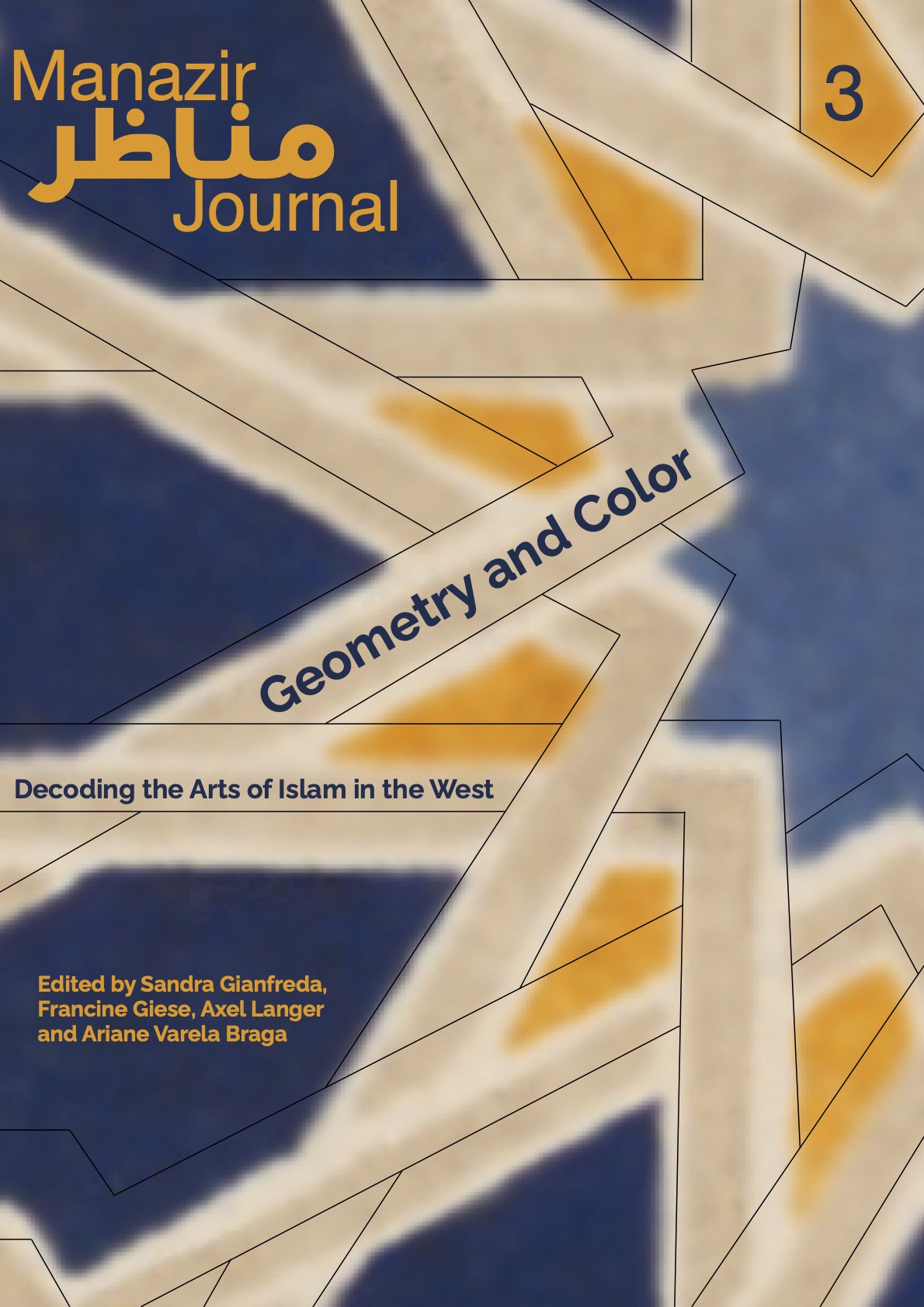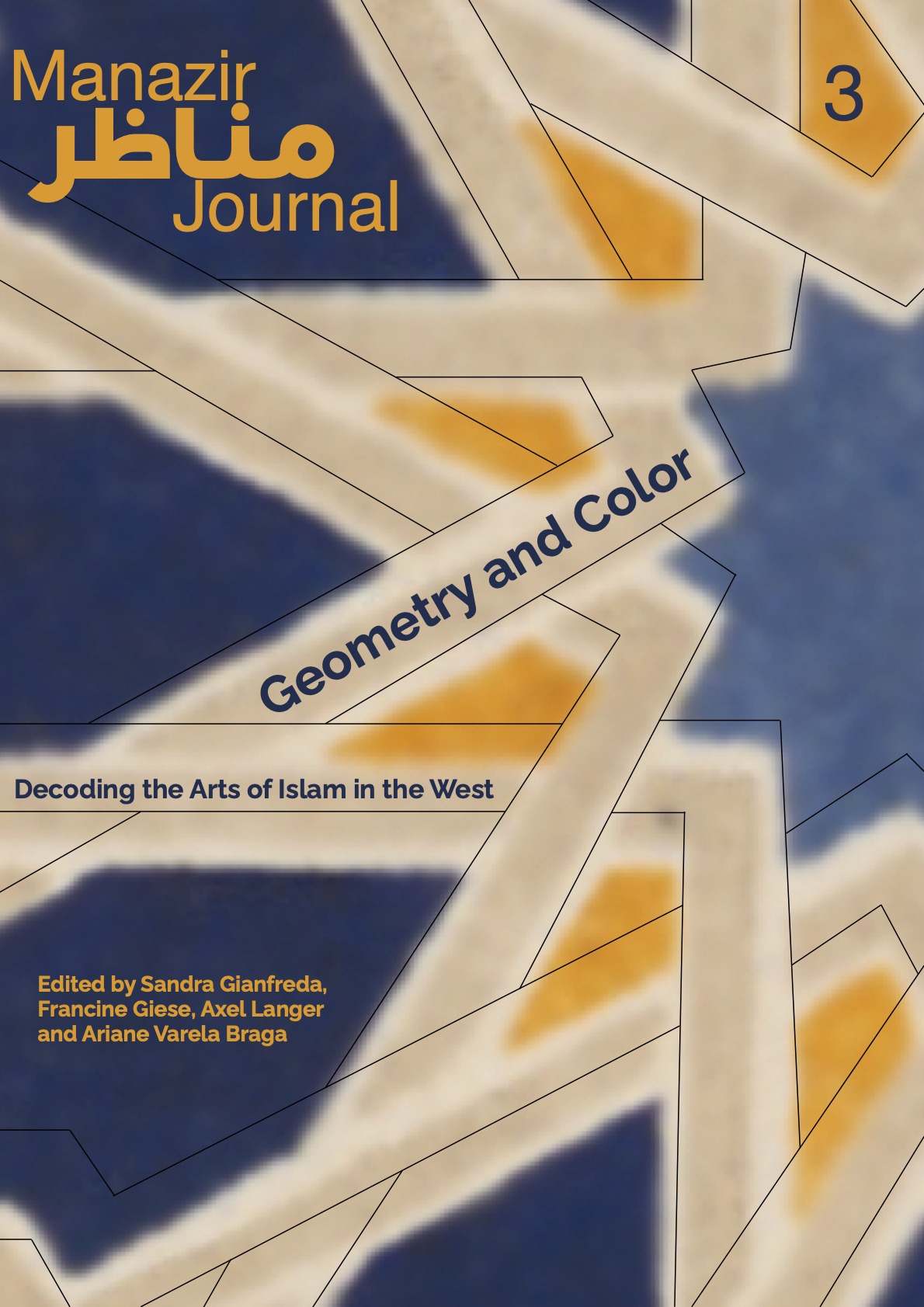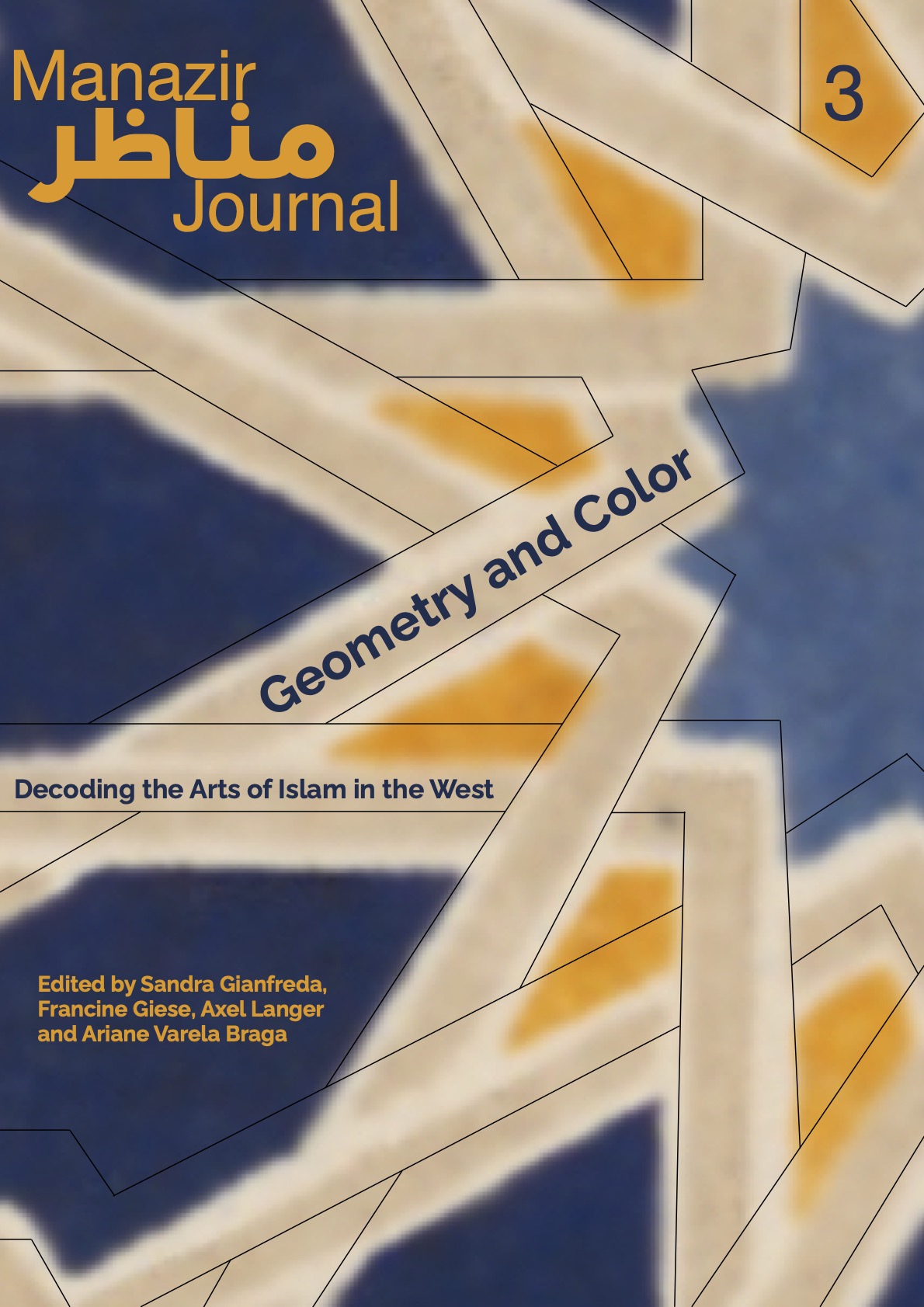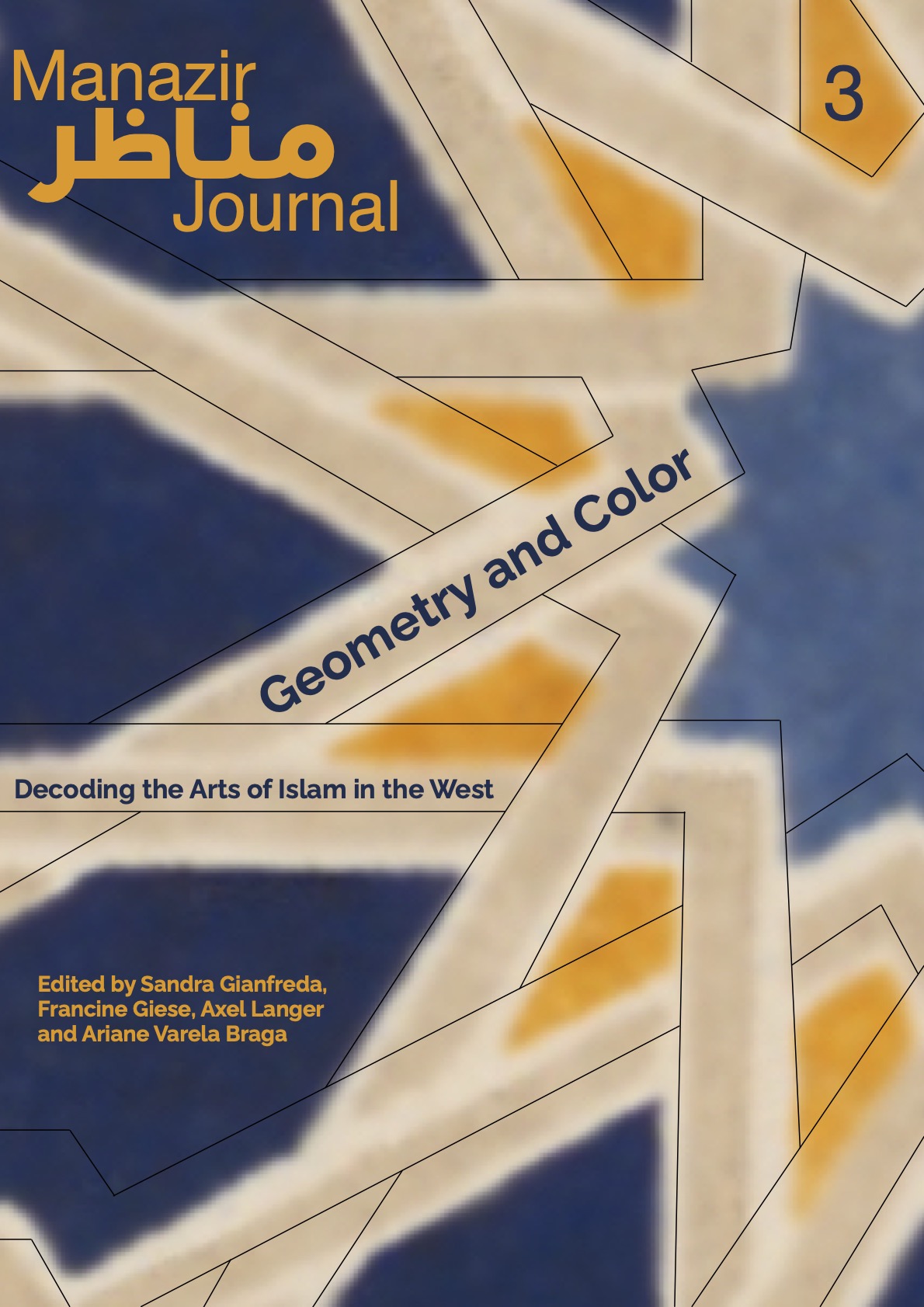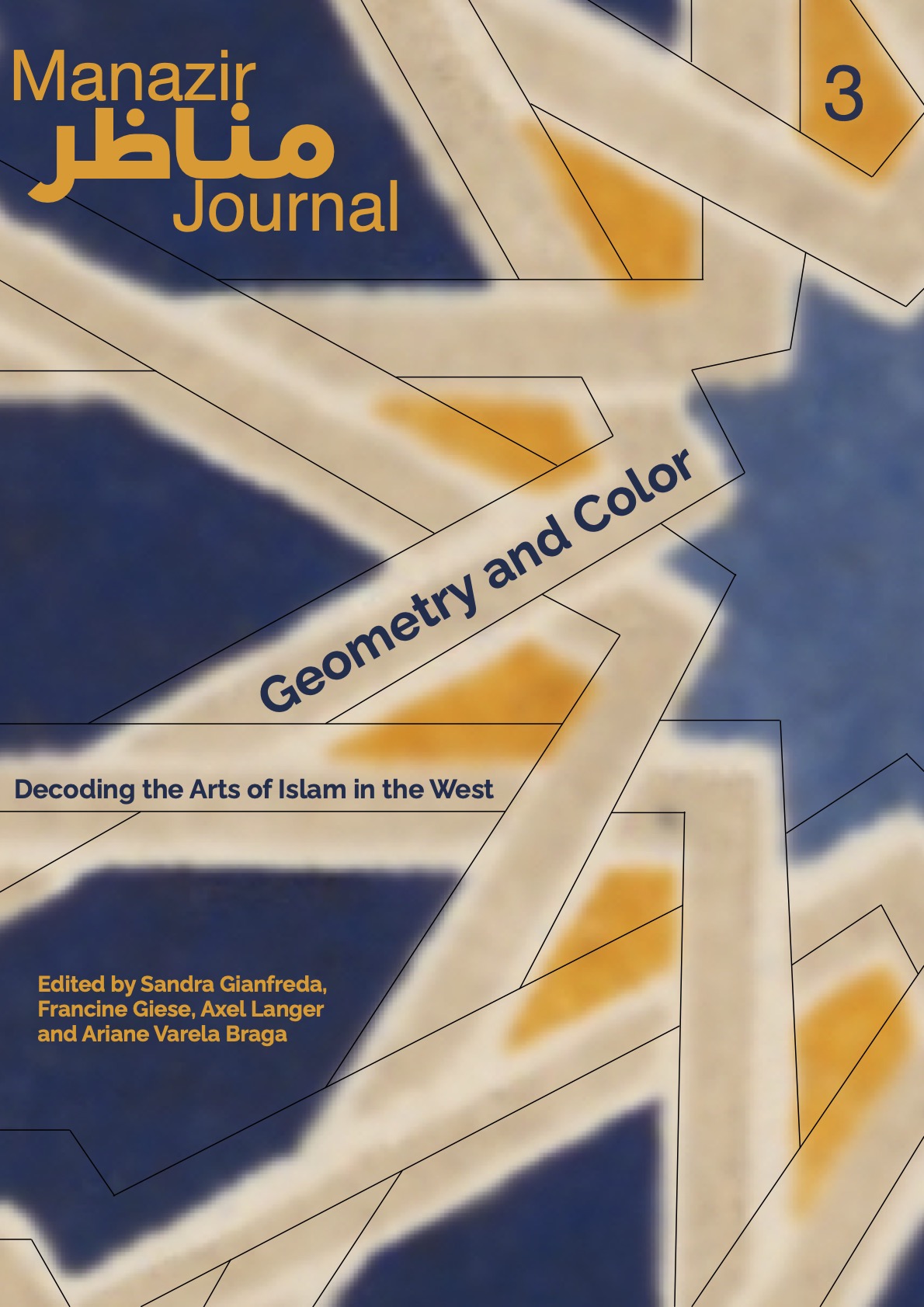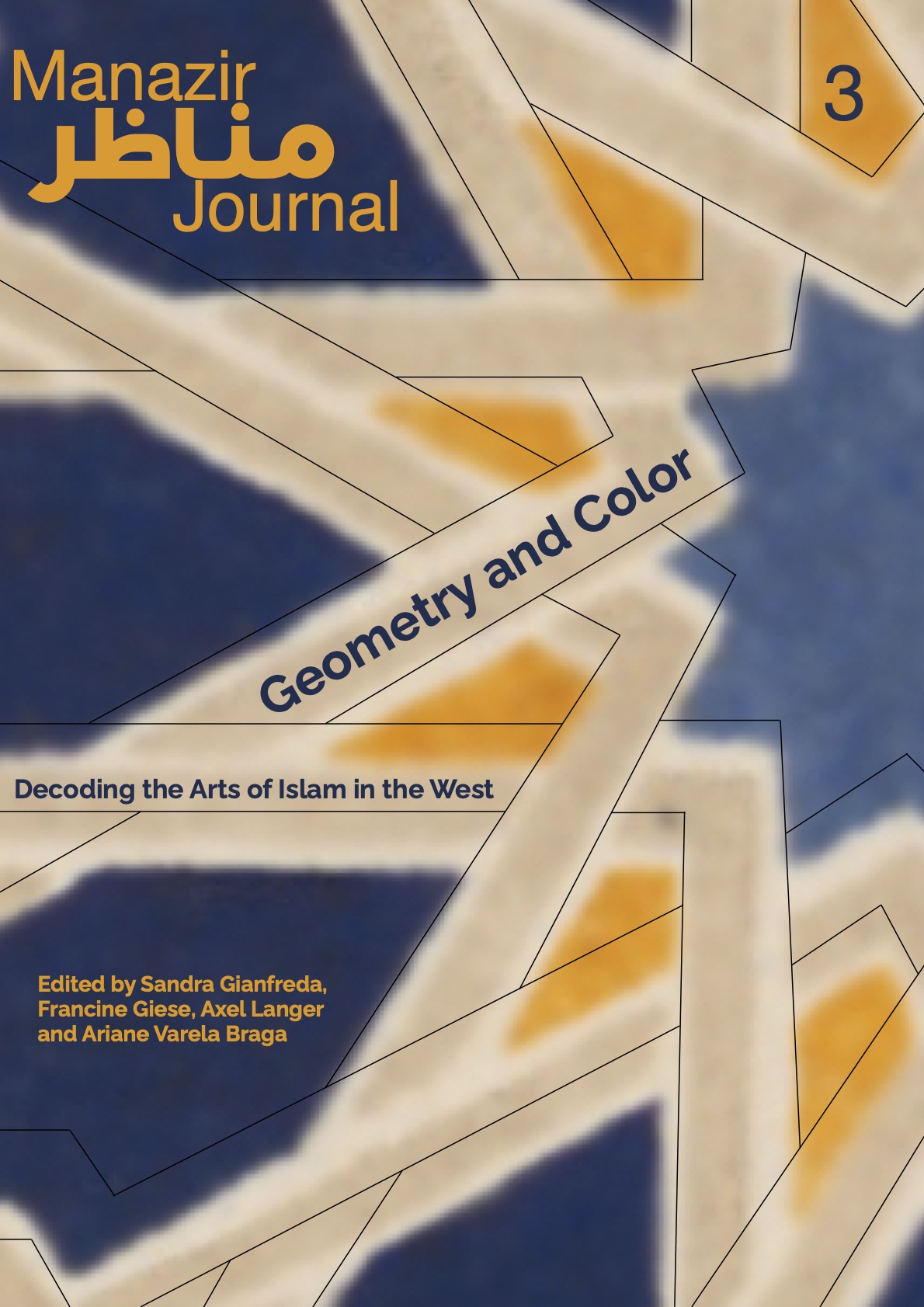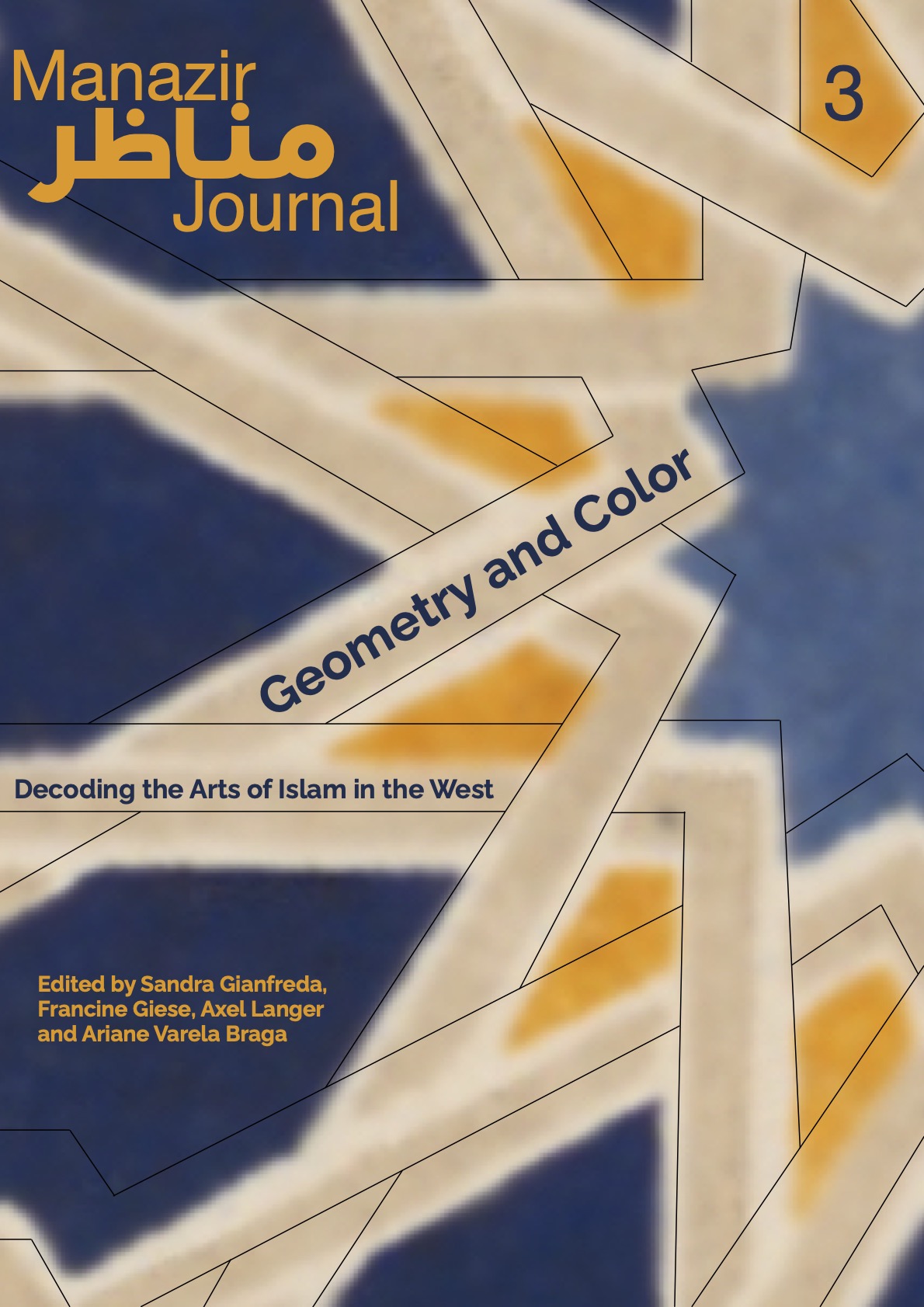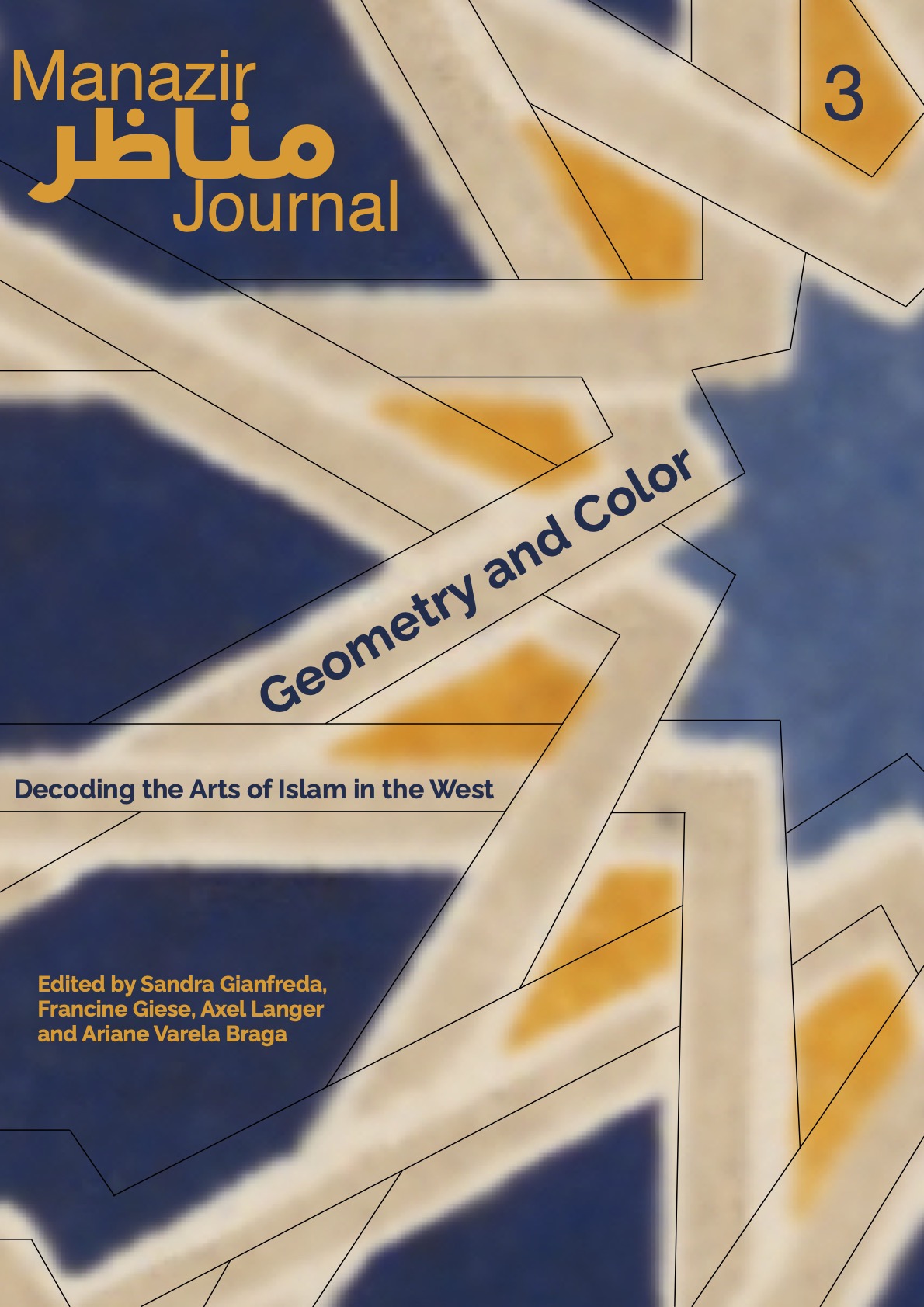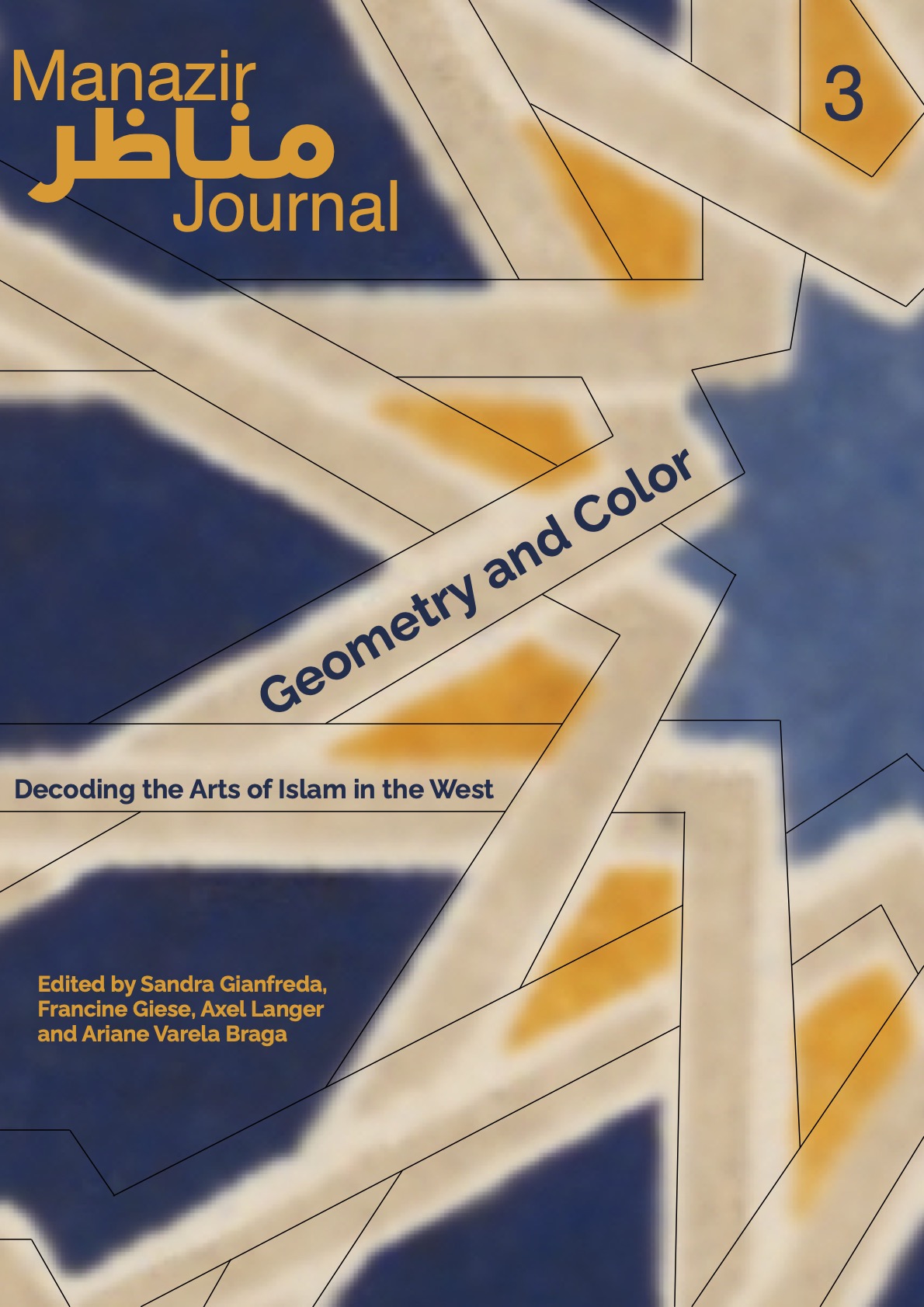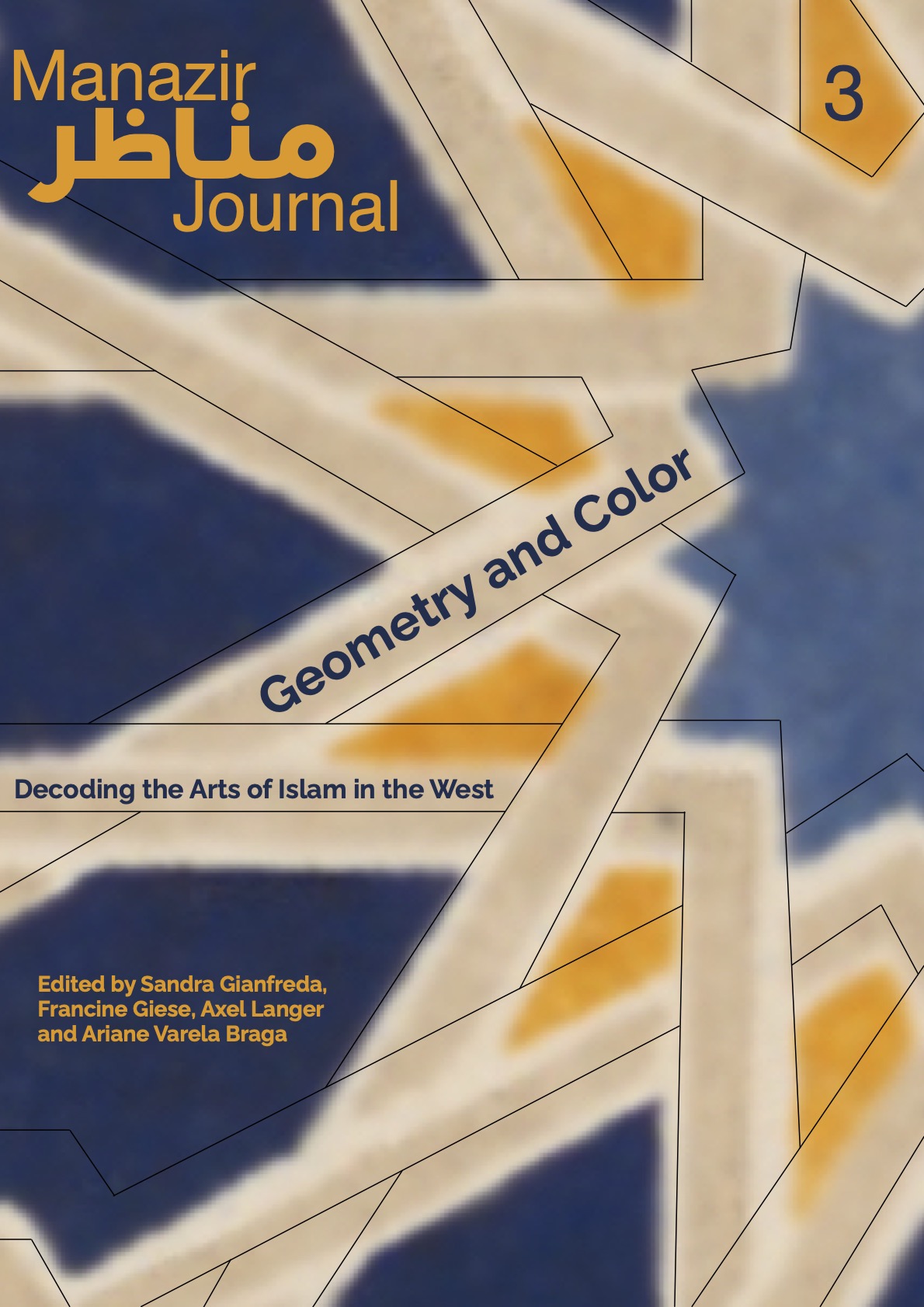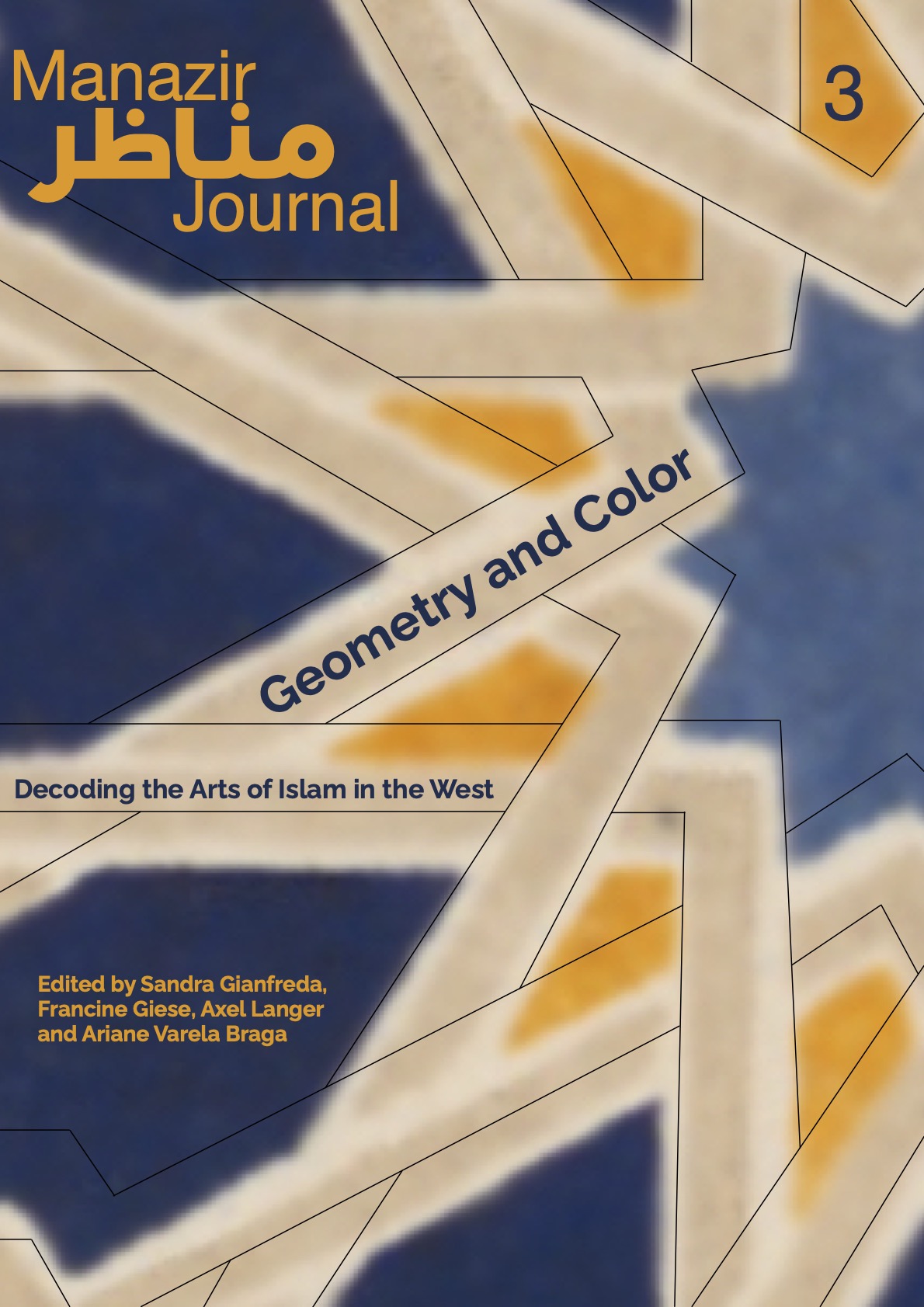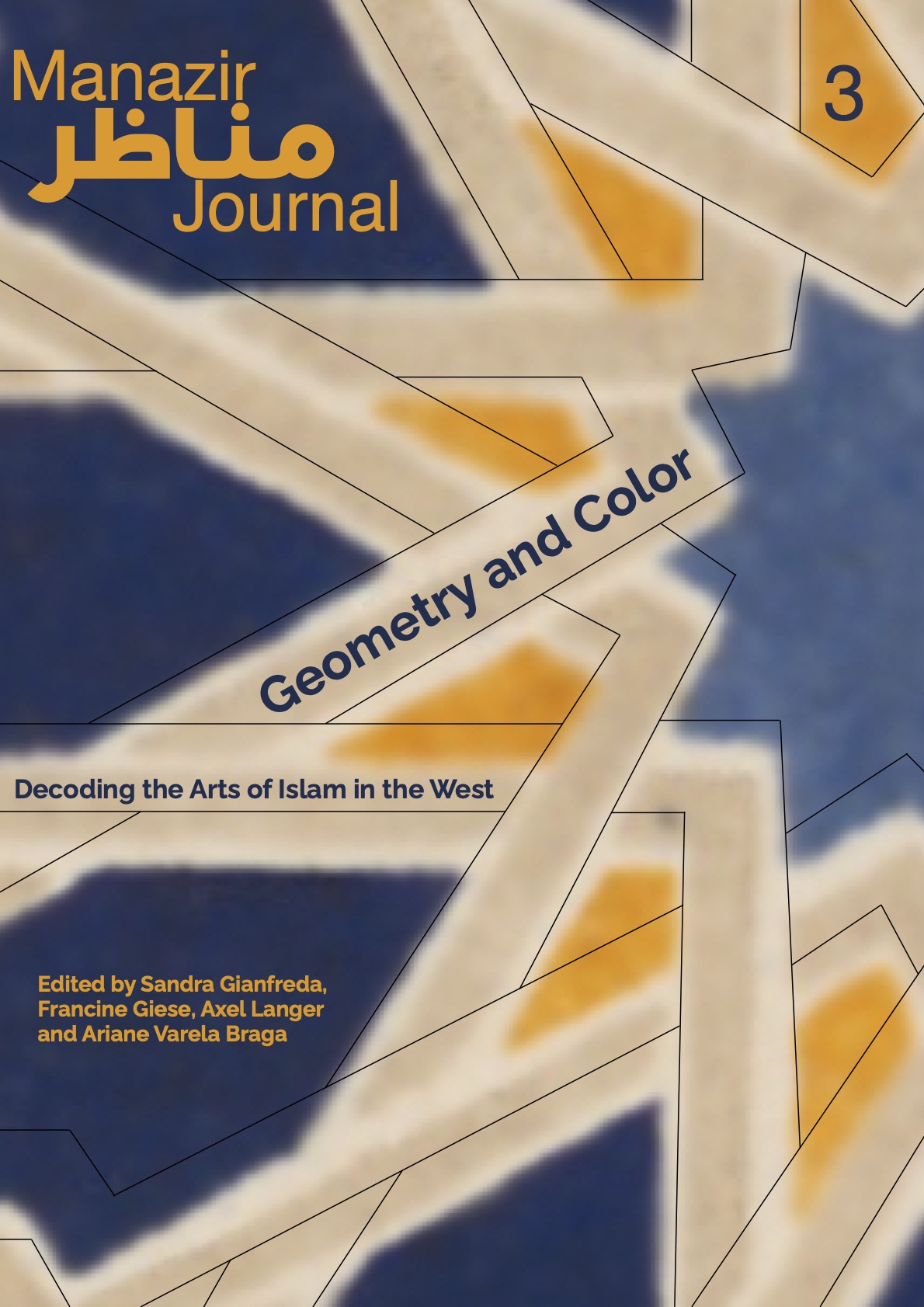
Volume 3Geometry and Color. Decoding the Arts of Islam in the West from the Mid-19th to the Early 20th Century
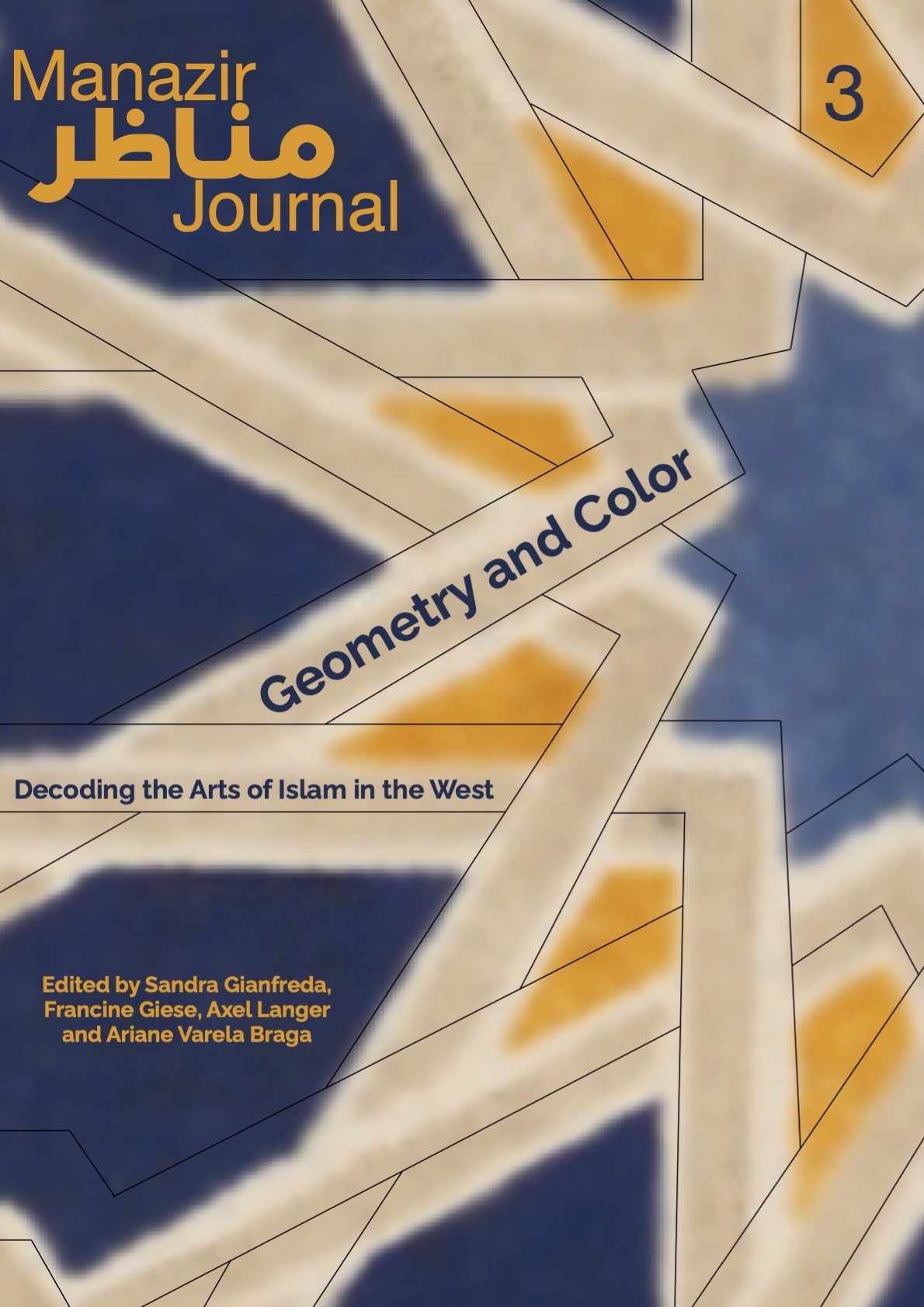
Issue description
The art and architecture of the Islamic world had a decisive impact on the development of decorative and fine arts from 1880 to 1945. Many leading artists and architects took inspiration from the rich Islamic language of forms and ornamentation. They were fascinated by the mathematical principles and unusual harmonies of colors in Persian miniatures and rugs, stained glass windows or Iznik tiles, and punched metal works and ceramics from the Near East, North Africa and Moorish Spain. While only some of them actually visited the Islamic world and studied its art and architecture in situ, many discovered it through exhibitions and publications. Following on from Paris (1893/1903), Stockholm (1897) and Algiers (1905), Munich set new standards in 1910 with the exhibition “Meisterwerke muhammedanischer Kunst” (“Masterpieces of Muhammadan Art”). Museums, art dealers and private collectors from a number of countries contributed some 3,600 works, including valuable carpets, ceramics, metalwork pieces and Persian miniatures. The exhibition marked a turning point not only for the academic studies of the time, but also in terms of the reception of Islamic arts. In the Western fine and decorative arts of the 19th century, the “Orient” conjured up motivic imagery heavily influenced by the colonialist perspective, whereas the artists of early Modernism investigated Islam’s stylistic devices in depth, transposing them to their own environment through a process of artistic internalization. In combination with their own traditions and their respective times, it was this very internalisation that instilled motivating creative processes, out of which artists developed countless new forms of expression.
The contributions in this volume approach these questions from different perspectives, considering theoretical and practical applications developed by western artists, architects and decorators and how Islamic art was considered as a model for the renewal of European arts at the turn of the twentieth century.
